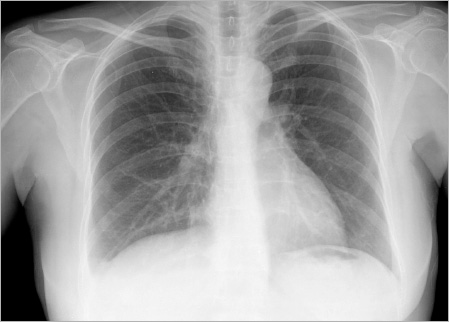J Breast Cancer.
2010 Dec;13(4):443-447. 10.4048/jbc.2010.13.4.443.
Intrapleural Paclitaxel Chemotherapy in the Treatment of Breast Cancer-Related Metastatic Malignant Pleural Effusion
- Affiliations
-
- 1Department of Surgery, Yeungnam University College of Medicine, Daegu, Korea. crystallee@med.yu.ac.kr
- KMID: 2286534
- DOI: http://doi.org/10.4048/jbc.2010.13.4.443
Abstract
- Malignant pleural effusion in breast cancer has been associated with poor prognosis. The response rate of local treatment has been very low and in some case, complications have resulted in death. We investigated the efficacy and safety of paclitaxel, as an intrapleural chemotherapeutic agent. From January 2006 to December 2009, ten breast cancer patients who had developed malignant pleural effusion were infused with intrapleural paclitaxel through a chest tube, which was clamped for 48 hours. The chest tube was maintained until drainage was reduced to less than 50-100 mL/day. The average time spent with a chest tube attached following intrapleural chemotherapy was 9.3 days. During the follow-up period, six patients had no recurrent pleural effusion and two received a second round of intrapleural chemotherapy following which no further pleural effusion recurred. There were no severe side effects except for mild toxicity. It is suggested that intrapleural paclitaxel chemotherapy may be superior to conventional local treatment and may represent an effective treatment modality with low toxicity.
Keyword
MeSH Terms
Figure
Reference
-
1. Barbetakis N, Antoniadis T, Tsilikas C. Results of chemical pleurodesis with mitoxantrone in malignant pleural effusion from breast cancer. World J Surg Oncol. 2004. 2:16.2. American Thoracic Society. Management of malignant pleural effusions. Am J Respir Crit Care Med. 2000. 162:1987–2001.3. Hsu C. Cytologic detection of malignancy in pleural effusion: a review of 5,255 samples from 3,811 patients. Diagn Cytopathol. 1987. 3:8–12.
Article4. Walker-Renard PB, Vaughan LM, Sahn SA. Chemical pleurodesis for malignant pleural effusions. Ann Intern Med. 1994. 120:56–64.
Article5. Silva OE, Zurrida S. Breast Cancer. a Practical Guide. 2005. 3rd ed. New York: Elsevier Saunders.6. Ohta Y, Shimizu Y, Matsumoto I, Watanabe G. Management of malignant pleural effusion by multimodality treatment including the use of paclitaxel administered by 24-hour intrathoracic infusion for patients with carcinomatous pleuritis. J Exp Clin Cancer Res. 2006. 25:15–19.7. Tattersall M. Pleural effusions. Curr Opin Oncol. 1992. 4:642–646.
Article8. Sahn SA. State of the art. The pleura. Am Rev Respir Dis. 1988. 138:184–234.9. Tremblay A, Michaud G. Single-center experience with 250 tunnelled pleural catheter insertions for malignant pleural effusion. Chest. 2006. 129:362–368.
Article10. Tan C, Sedrakyan A, Browne J, Swift S, Treasure T. The evidence on the effectiveness of management for malignant pleural effusion: a systematic review. Eur J Cardiothorac Surg. 2006. 29:829–838.
Article11. Anderson CB, Philpott GW, Ferguson TB. The treatment of malignant pleural effusions. Cancer. 1974. 33:916–922.
Article12. Martini N, Bains MS, Beattie EJ Jr. Indications for pleurectomy in malignant effusion. Cancer. 1975. 35:734–738.
Article13. Rehse DH, Aye RW, Florence MG. Respiratory failure following talc pleurodesis. Am J Surg. 1999. 177:437–440.
Article14. Perng RP, Wu MF, Lin SY, Chen YM, Lin JY, Whang-Peng J. A phase I feasibility and pharmacokinetic study of intrapleural paclitaxel in patients with malignant pleural effusions. Anticancer Drugs. 1997. 8:565–573.
Article
- Full Text Links
- Actions
-
Cited
- CITED
-
- Close
- Share
- Similar articles
-
- Intrapleural chemotherapy with cisplatin and cytarabine in the management of malignant pleural effusion
- A Case of Successful Intrapleural Chemotherapy with Cisplatin Plus Cytarabine for Intractable Malignant Pleural Effusion
- Intrapleural chemotherapy with cisplatin and cytarabine in the management of malignant pleural effusion
- A Case of Malignant Pleural Effusion Treated by Chemical Pleurodesis in Ovarian Carcinoma
- A Case of a Huge Mass Due to Pleural Metastasis and Management of Dyspnea in a Patient with Terminal Breast Cancer



